Name Gary Laid down 18 December 1982 Decommissioned 5 August 2015 Launched 19 November 1983 | Awarded 22 May 1981 Commissioned 17 November 1984 Construction started 18 December 1982 | |
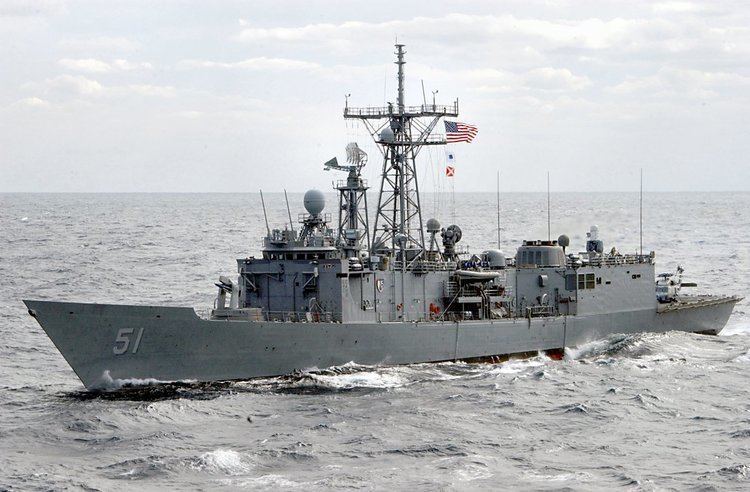 | ||
Builders Vigor Shipyards, Todd Pacific Shipyards, Los Angeles Division | ||
Weapons of uss gary ffg 51
USS Gary (FFG-51) is an Oliver Hazard Perry-class frigate in the United States Navy. She was named for Medal of Honor recipient Commander Donald A. Gary (1903–1977).
Contents
- Weapons of uss gary ffg 51
- Uss gary ffg 51 rimpac 2012
- Background
- Notable history
- Coat of Arms
- References
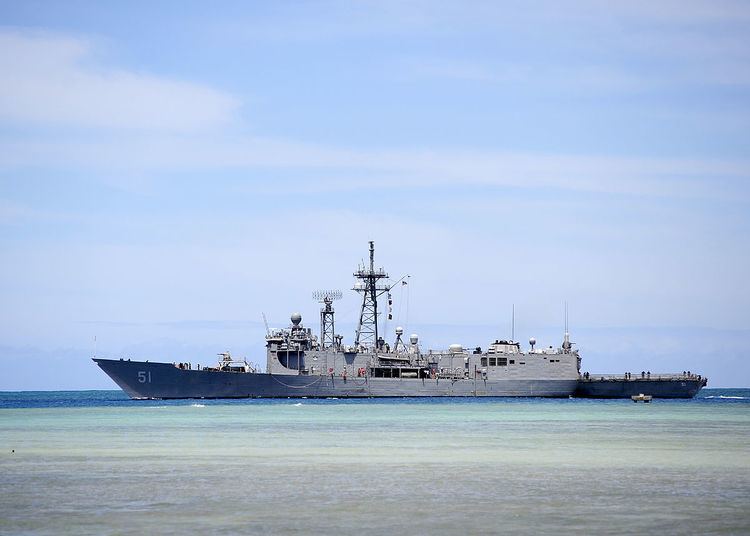
Gary was laid down on 18 December 1982 at Todd Pacific Shipyards, Los Angeles Division, San Pedro, California; launched on 19 November 1983, co-sponsored by Mrs. Dorothy G. Gary, widow of the late Cmdr. Gary, and Mrs. Joyce Leamer, the late Medal of Honor recipient’s niece; and commissioned on 17 November 1984 at Naval Station Long Beach, Commander Harlan R. Bankert Jr. in command.
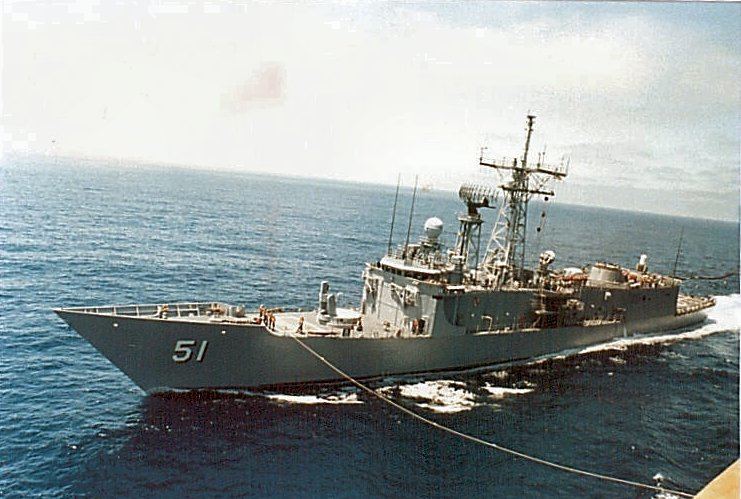
Uss gary ffg 51 rimpac 2012
Background
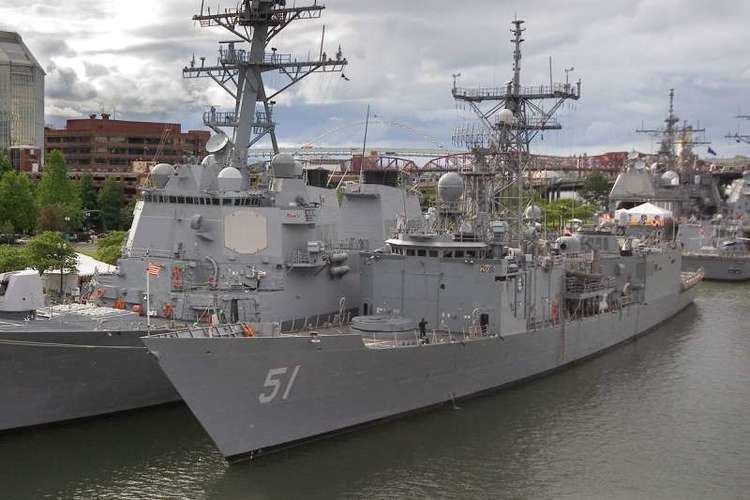
Gary is the forty-fifth ship of the Oliver Hazard Perry-class of guided missile frigates. These ships were built to provide air, surface and sub-surface protection for underway replenishment groups, convoys, amphibious groups and other military and merchant shipping. While a capable surface combatant in these traditional warfare areas, Gary's role has expanded from that of the early 1980s to meet the threats and contingencies of the 21st century. Being the smallest multi-mission surface combatant in the U.S. Navy, Gary's shallow draft gives her an advantage over larger cruisers and destroyers in the littoral operations that have characterized recent conflicts.
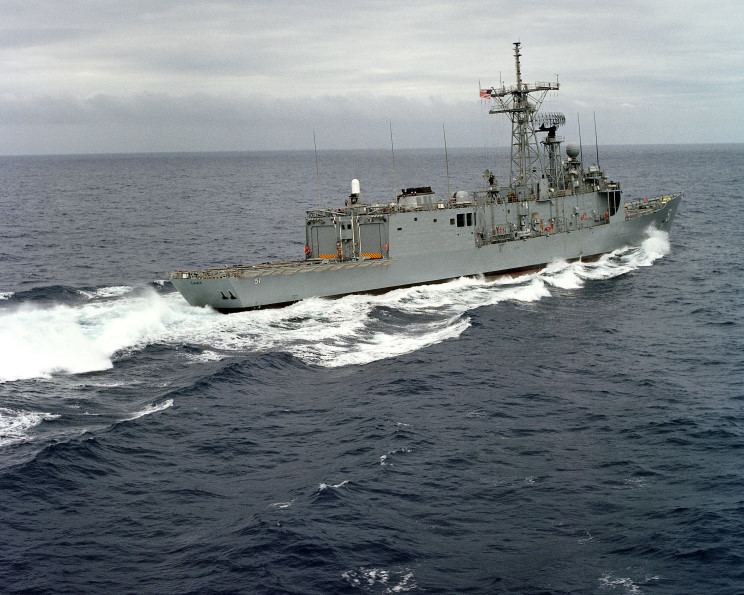
Gary's engineering plant is computer controlled and monitored, reducing the number of watchstanders required in the engineering spaces themselves. Two marine gas turbine engines provide propulsion. Digital electronic logic circuits and remotely operated valves are monitored in a central control station and make Gary capable of getting ready to get underway in less than ten minutes rather than the eight hours required by steam-powered ships.
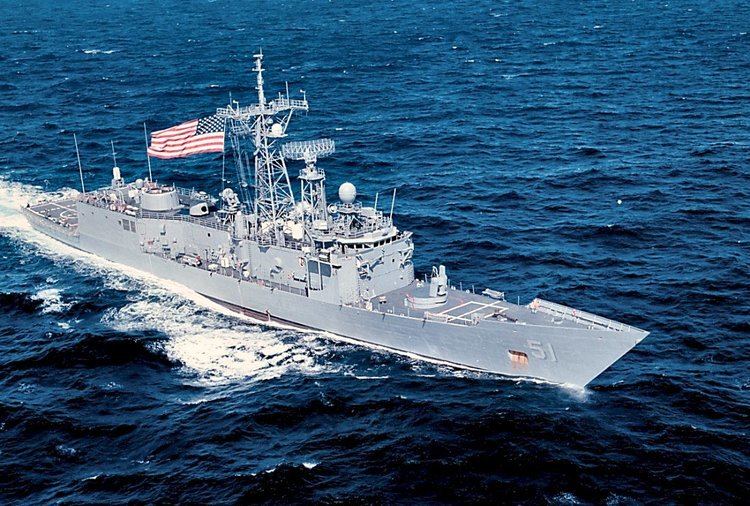
One of the U.S. Navy’s premiere anti-submarine warfare (ASW) platforms, Gary routinely deploys for bi-lateral ASW exercises and real-world contingency operations in the western Pacific and Indian Oceans. During Operation Iraqi Freedom, she displayed her versatility, deploying to the Arabian Sea, Persian Gulf, Gulf of Aden and Red Sea, conducting carrier escort and air defense, intelligence gathering and presence missions, terrorist interdiction operations, rescue at sea and escorted dozens of merchant and military supply ships through the Strait of Hormuz and Bab-el-Mandeb strait. From 1999 to 2007, Gary was forward-deployed to Yokosuka, Japan, as part of the United States Seventh Fleet. During 2007, Gary completed a hull-swap/crew-swap with McCampbell (DDG-85) and is now home-ported at Naval Station, San Diego.
Notable history
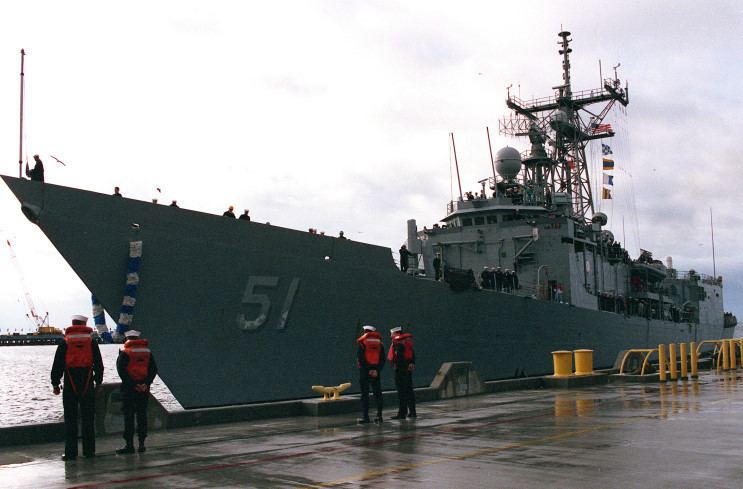
An Iranian mine damaged guided missile frigate Samuel B. Roberts in the Persian Gulf on 14 April 1988. On 18 April the U.S. launched retaliatory Operation Praying Mantis against the Iranian-occupied Rakhsh, Salman (Sassan), and Sīrrī-D (Nassr) oil platforms. Gary coordinated her efforts with naval aircraft while protecting Mobile Sea Bases Hercules and Wimbrown VII during the fighting. She even claimed to have shot down a Silkworm missile, but this was never officially credited nor was she officially commended for her actions due to political reasons at that time.
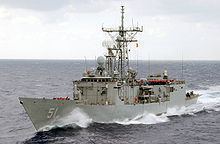
While aircraft carrier Kitty Hawk, guided missile destroyer Curtis Wilbur, and Gary, with an embarked an SH-60B Seahawk of Helicopter Antisubmarine Squadron (Light) (HSL) 51 Detachment 5, passed through the Strait of Malacca, en route to the Indian Ocean, on 7 October 2001, they rescued five Indonesian fishermen from their sinking 40-foot fishing vessel.

On 13 March 2003, Gary, with an SH-60B of HSL-51 embarked, assisted in the rescue of all eight Iraqi fishermen from dhow Kaptain Muhamadat when she lost steerage and propulsion in heavy seas and capsized 20 miles south of the Iranian coast.
On 9 February 2007 Gary docked at the Cambodian port of Sihanoukville. It is the first time since the Vietnam War that an American warship has docked in Cambodia.
In the summers of 2012 and 2014, Gary took part in the largest Rim of the Pacific multi-national naval exercise including 23 nations and over 40 ships.
While Gary, with a Coast Guard law enforcement detachment team embarked, deployed for Operation Martillo (Spanish for “Hammer”), a counter-narcotics patrol, in the Eastern Pacific Ocean, she intercepted a suspicious vessel on 4 January 2013. The Coast Guardsmen and Sailors from the ship’s "visit, board, search, and seizure" (VBSS) team boarded the suspected smuggler and seized 600 pounds (270 kg) of cocaine with an estimated street value of $22 million. “This was one of those vessels we were chasing in the dark,” Leatrice Daniels, Gary's embarked Naval Criminal Investigative Service (NCIS) agent explained, “There was great open communication with everybody involved. Everything just flowed, from pursuit to initial contact and boarding.” The investigators deemed the smuggler a hazard to navigation and sank her. This case concluded a hectic week in which Gary's crewmembers and Coast Guardsmen boarded three boats, disrupting more than 2,000 pounds (910 kg) of cocaine destined for the United States with a street value of $272 million.
On the night of 8 January 2013, Gary encountered a small vessel loaded with cargo. The boat displayed several indicators that she was involved in illicit trafficking, and the VBSS team and the Coast Guardsmen boarded the vessel. While they searched the boat, she suffered a temporary steering casualty, rendering her dangerous to operate. Gary rigged a tow until the Americans and the mariners restored the boat’s steering. The intervening time enabled the boarders to complete their search and they failed to discover any narcotics on board, and the vessel resumed her voyage two days later.
The ship capped her deployment by seizing an additional vessel smuggling more than 2,200 pounds (1,000 kg) of cocaine valued at $81 million. “It was a complex operation,” Lt. (j.g.) Christian Gotcher, the ship’s navigation officer, recalled, “involving a law enforcement boarding, boat and helicopter searches, precision driving, detainee handling, and multiple deck operations, but Gary's crew proved they were fully capable of handling it and scored a big win.”
Gary was decommissioned on 23 July 2015 at Naval Base San Diego, California.
The ship will be inactivated on 5 August 2015 and then prepared for transfer to Taiwan.
Gary appeared in the film adaptation of Tom Clancy's The Hunt for Red October.
Coat of Arms
Shield: Azure escutcheon with blue chevron surmounted by gold Mer-lion holding a three-bladed ship’s propeller proper under an inverted rocker of five argent stars. Crest: On a wreath of the colors gold and azure a demi-sun gules below a fire-bomb proper flanked by two green palm fronds and surmounted by a gold stockless anchor between two demi-arrows proper. Motto: On an azure scroll in doubled gold the motto “Freedom’s Foremost Guardian.”
Symbolism
Shield: The light blue “V” shape represents the Medal of Honor ribbon as it rests on the dark blue of the Navy uniform. The “V for Victory” symbol was also used extensively during World War II at the time then-Lieutenant Gary was awarded the Medal of Honor. The five stars are from the medal service ribbon. The Merlion, a legendary seafaring creature, represents the courage shown by Lieutenant Gary when he saved hundreds of his shipmates from a violent death at sea. The ship’s propeller denotes that he was an Engineering Officer, who as such went back into the number 3 fireroom at great personal risk to direct the raising of steam to get the carrier Franklin underway after it was without power for several hours due to extensive damage from enemy action.
Crest: The stockless anchor is one of the distinguishing features of the Navy’s Medal of Honor and is also an ancient symbol of the sea. The fire-bomb with three flames denotes the three times Lieutenant Gary braved fire and exploding bombs to lead several hundred men to safety. The arrowheads are a traditional warrior symbol indicative of the warship Gary. The setting sun is symbolic of the location of the battle off the coast of Kure, Japan in which Lieutenant Gary performed his heroic actions. The palm fronds are an age-old symbol of honor and also represent his service in the south Pacific theater.
